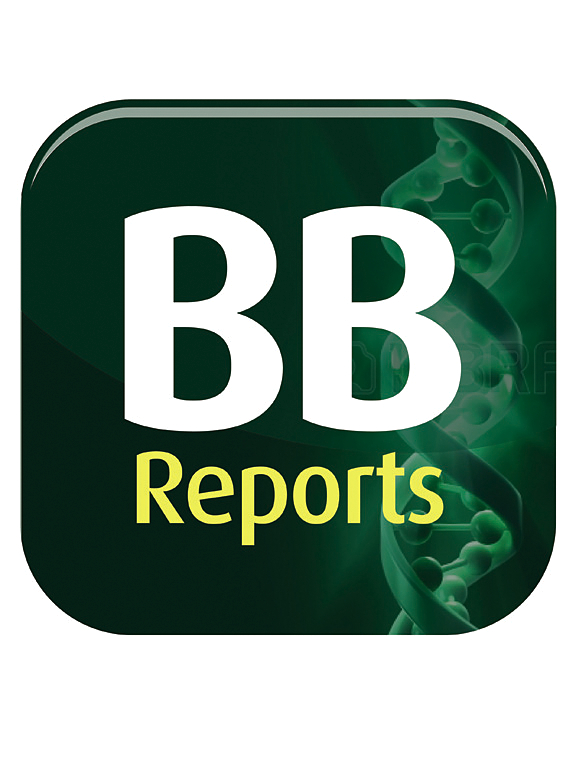Fc糖基化对IgG对铰链区化学还原的敏感性的影响:对免疫测定发展的影响
IF 2.2
Q3 BIOCHEMISTRY & MOLECULAR BIOLOGY
引用次数: 0
摘要
抗体是糖蛋白,Fc糖基化在维持CH2结构域的正确折叠中起着关键的结构作用。去糖基化的igg表现出开放的CH2结构域构象,在结构上也影响邻近的铰链区域。使用温和的还原剂选择性地还原该区域的二硫键,产生含有单价硫醇的igg (rig),可以将其固定在修饰的表面上,使Fab片段向外定向,提高抗原结合效率和检测灵敏度。本研究探讨了Fc糖基化对IgG化学还原的影响及其对内部ELISA和商业免疫测定的意义。IgGs用Endo S酶促去糖基化,然后用2-巯基乙胺还原为rIgGs。非还原性SDS-PAGE验证了脱糖基化和还原效率。糖基化和去糖基化的rIgGs在内部ELISA和商业免疫分析中进行检测。结果表明,去糖基化可能通过增加铰链区域对还原剂的可及性而显著提高了rIgG的产生。与糖基化的rIgGs相比,这导致ELISA敏感性增加了20倍。去糖基化还可以减轻批次间IgG还原的可变性,从而实现一致的rIgG产量。这些发现突出了去糖基化标准化rIgG生产的能力,扩大了其在诊断免疫测定和生物传感技术中的应用。本文章由计算机程序翻译,如有差异,请以英文原文为准。

The impact of Fc glycosylation on IgG susceptibility to hinge region chemical reduction: implications for the development of immunoassays
Antibodies are glycoproteins, and Fc glycosylation plays a critical structural role in maintaining the proper folding of the CH2 domain. Deglycosylated IgGs exhibit an open CH2 domain conformation that structurally affects also the neighboring hinge region. Selective reduction of disulfide bonds in this region using mild reducing agents generates monovalent thiol-containing IgGs (rIgGs), which can be immobilized on modified surfaces to orient the Fab fragment outward, enhancing antigen binding efficiency and assay sensitivity. This study investigates the effect of Fc glycosylation on IgG chemical reduction and its implications for in-house ELISA and commercial immunoassays. IgGs were enzymatically deglycosylated with Endo S and then reduced to rIgGs by 2-mercaptoethylamine. Deglycosylation and reduction efficiency were verified by non-reducing SDS-PAGE. Glycosylated and deglycosylated rIgGs were tested in in-house ELISA and commercial immunoassays. Results showed that deglycosylation significantly improves rIgG production, probably by increasing hinge-region accessibility to reducing agents. This led to a 20-fold increase in ELISA sensitivity compared to glycosylated rIgGs. Deglycosylation also mitigates batch-to-batch variability in IgG reduction, enabling consistent rIgG yields. These findings highlight the capability of deglycosylation to standardize rIgG production, broadening its applications in diagnostic immunoassays and biosensing technologies.
求助全文
通过发布文献求助,成功后即可免费获取论文全文。
去求助
来源期刊

Biochemistry and Biophysics Reports
Biochemistry, Genetics and Molecular Biology-Biophysics
CiteScore
4.60
自引率
0.00%
发文量
191
审稿时长
59 days
期刊介绍:
Open access, online only, peer-reviewed international journal in the Life Sciences, established in 2014 Biochemistry and Biophysics Reports (BB Reports) publishes original research in all aspects of Biochemistry, Biophysics and related areas like Molecular and Cell Biology. BB Reports welcomes solid though more preliminary, descriptive and small scale results if they have the potential to stimulate and/or contribute to future research, leading to new insights or hypothesis. Primary criteria for acceptance is that the work is original, scientifically and technically sound and provides valuable knowledge to life sciences research. We strongly believe all results deserve to be published and documented for the advancement of science. BB Reports specifically appreciates receiving reports on: Negative results, Replication studies, Reanalysis of previous datasets.
 求助内容:
求助内容: 应助结果提醒方式:
应助结果提醒方式:


